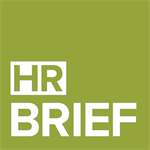
The Best Benefits to Avoid the Great Resignation
According to recent government statistics, employees are walking away from their jobs in record numbers. During this period of mass resignation (sometimes referred to as “the great resignation”), employers need to demonstrate their value to employees or risk losing them. Here are some of the most attractive benefits employers are using to strengthen their attraction and retention efforts.
Affordable Benefits, Generally
After enduring the worst of the COVID-19 pandemic, many front-line, low-wage or low-level employees concluded that their labor wasn’t worth their compensation. Savvy employers have picked up on this and are beginning to offer more attractive benefits to employees. Even modest benefits can make a huge difference when courting employees.
Retirement Plans
Only 62% of workers feel secure about their ability to save enough to retire, according to the Employee Benefits Research Institute. Providing employees with retirement plan options, such as a 401(k), can be a great way to add value and financial security to a position.
Flexible Work
Surveys find that the majority of workers who worked from home at least some of the time during the pandemic want to retain that perk indefinitely. All evidence indicates that if employers want to stay competitive, they will need to allow for some flexibility.
Personalized Well-being Resources
Personal well-being has never been more important to employees than during the COVID-19 pandemic. That’s why some employers are tacking on benefits such as mental health counseling, financial planning assistance and student loan repayment plans.
Employer Takeaway
In today’s labor market, an employer’s benefits offerings can be the difference between a satisfied workforce and mass employee resignations. Contact us today to discuss benefits options that are right for your unique workforce.
DOL to Hire 100 Investigators, Signaling Potential Enforcement Increase
The U.S. Department of Labor (DOL) recently announced an initiative to add 100 investigators to its Wage and Hour Division (WHD)—a potential sign to employers that increased enforcement may be on the horizon.
Overview of the WHD
The WHD enforces comprehensive labor laws that affect more than 148 million workers.
The DOL reports that in fiscal year 2021, the WHD collected $230 million in wages owed to 190,000 workers.
According to the department, the core enforcement obligations of WHD investigators include:
- Conducting investigations to determine if employers are paying workers and affording them their rights as the law requires
- Helping ensure that law-abiding employers are not undercut by employers who violate the law
- Promoting compliance through outreach and public education initiatives
- Supporting efforts to combat worker retaliation and worker misclassification as independent contractors
What’s Next?
This addition of WHD investigators could translate to an increase in enforcement in 2022.
As such, employers should be sure to review their workplace policies and procedures to ensure compliance with all applicable workplace laws and regulations. Common violations include worker misclassification, unpaid overtime, tip theft, insufficient break periods and failure to provide protected leave.
Reach out to Seubert & Associates, Inc. today for additional resources.

